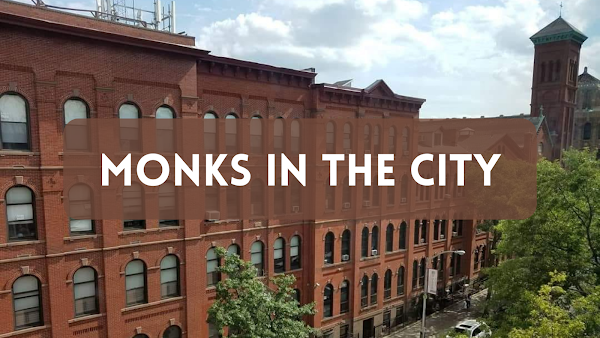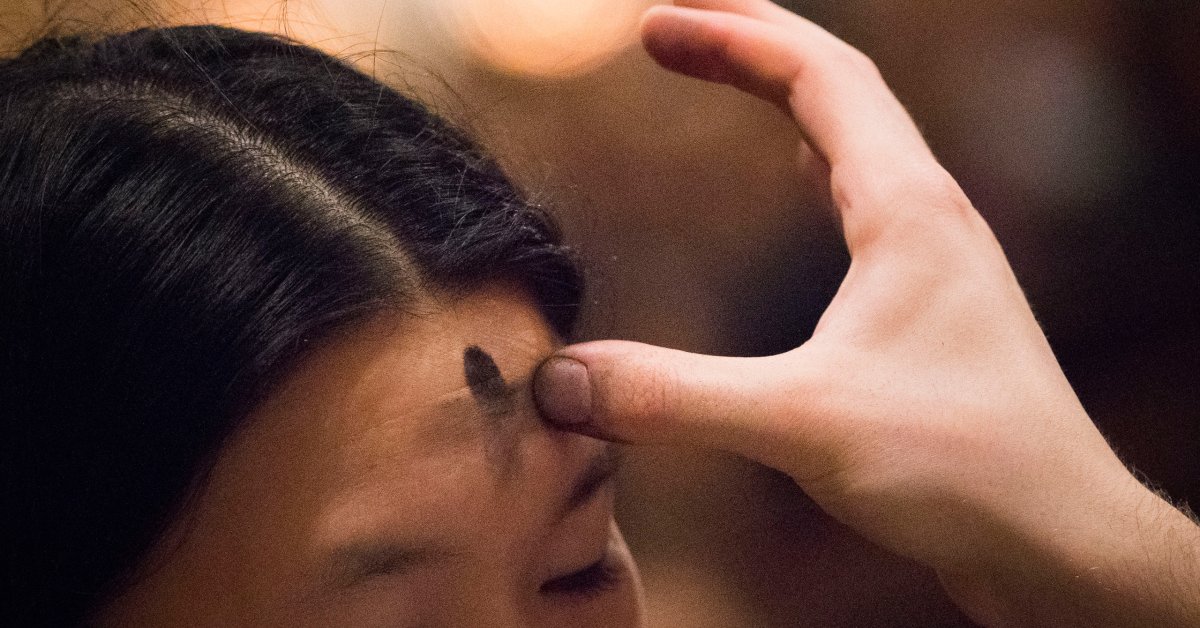By: Br. Bruno Mello, nO.S.B.
O God, who called Saint Bruno to serve you in solitude, grant, through his intercession, that amid the changes of this world we may constantly look to you alone.
Four years ago today, the feast day of St. Bruno, I heard these words echo through the oratory of a former Carthusian monastery nestled in the foothills of the Alps. Located in Gaming, Austria, the sprawling monastery stands rooted on the valley floor, a maze of white washed walls topped by red-shingled roofs peaked in steep triangles. Climbing heavenward from the vast charterhouse is the oratory, which stands nearly twice as tall as any building connected to it. Everything about the church is disproportionally vertical: its walls reach higher that the summits of the surrounding rooftops, the angle of the roof is steeper than any other on the property, and an airy stone spire rises to a point, proclaiming to the entire valley that this is the place where Heaven meets earth. The whole outward appearance of the church proclaims this truth: it seems as if an invisible hand has grabbed hold of the spire and pulled upward, vertically stretching the entire oratory. Even in the heavy shadows of the surrounding mountains, the oratory effortlessly soars upward.
Within the church, the same message is apparent in the architecture. Sitting in a simple wooden pew, I would gaze upward, following the white washed walls to where they meet the unexpectedly high ceiling and give way to floral patterns and frescos. Looking down from Heaven upon the worshippers in the pews below is St. Bruno, whose life is depicted in three huge frescos adorning the oratory ceiling. One in particular always caught my eye: the apotheosis of St. Bruno, ascending into Heaven on the hands of angels, his head surrounded by seven stars.
 |
Before I arrived in Austria as a twenty-year old college student, I was vaguely familiar with St. Bruno. I had seen the film Into Great Silence, read They Speak By Silences, and knew St. Bruno as the founder of the Carthusian Order. But it was sitting in the cavernous oratory at the Gaming Charterhouse that St. Bruno captured my imagination. Like the spire that pulled the church upward, the paintings of St. Bruno on the ceiling seemed more like portals than decorations: they were windows into an invisible reality, one which St. Bruno lived in all his life.
St. Bruno was born in Cologne (present-day Germany) in the year 1030. We know little of his childhood, but historians find him again as a young man, ordained a priest around the age of 25 and appointed head of the cathedral school in Reims (present-day France) at the age of 26. He gained great renown as a teacher, especially for his lectures on the Psalms. In his forties, he was appointed chancellor of the Archdiocese of Reims, which put him in conflict with the corrupt, simoniac archbishop, Manasses. St. Bruno's opposition to Manasses cost him greatly and he was forced to flee Reims until Manasses was deposed by Pope Gregory VII. St. Bruno's courageous stand against ecclesiastical corruption earned him great popular acclaim and he quickly became the top candidate to replace Manasses as Archbishop of Reims, the most prestigious diocese in the region. The Lord, however, was calling Bruno to serve the Church in a different way.
Leaving Reims, Bruno sought to live as a hermit, first under the direction of St. Robert of Molesme (one of the founders of the Cistercian Order). After some time in Molesme, Bruno left with six companions and traveled to the French Alps, where in 1084, he established a hermitage in a remote mountain wilderness in the Chartreuse Mountains (yes, there is a connection to the drink). At the Chartreuse, Bruno and his companions lived lives of prayer and solitude, coming together for common prayer only a few times a day, and spending most of their hours in silent contemplation and manual labor. This was Bruno's vocation, but it was short lived, as he was summoned to Rome to serve as advisor to Pope Blessed Urban II, one of his former students.
Once again resisting worldly honors, St. Bruno begged to be allowed to return to his solitary life. Bl. Urban II consented, and Bruno was permitted to found another hermitage in Calabria (present-day southern Italy), though his surviving letters make it clear that he remained affectionately attached to his brothers back in the Chartreuse. Bruno lived the rest of his life in Calabria, where he died in 1101. Though Bruno never intended to found a religious order, after his death, his followers recorded the practices of his communities in the Consuetudines, the founding document of the Carthusian order. Today, the Carthusian Order is recognized as the strictest monastic order in the Church, with about 400 monks and nuns living in 23 monasteries (called charterhouses) across the world.
It seems strange that a man who fled worldly honors should be depicted in a gloriously Baroque apotheosis scene: eyes raised to heaven, hands outstretched, angel garments swirling in the wind. But St. Bruno is full of paradoxes: a man of great worldly potential, who left everything to seek God alone, who was then raised up by God to be a model of holiness for the whole world. This model that the life of St. Bruno demonstrates is not fleeing, but seeking. St. Bruno, in the midst of drama and political intrigue, never backed down from a challenge. He faced down his own archbishop and was an advisor to the Pope. His life as a hermit was not as escape. It was a pursuit. He fixed his eyes on God and ran towards Him, never wavering, and everything else fell away.
Bruno was not a man afraid of the world; he was a man deeply in love with Jesus Christ. One of the most common Scripture verses associated with the Carthusians is from the Prophet Jeremiah: "You seduced me, Lord, and I let myself be seduced." St. Bruno allowed himself to be seduced by God, to be drawn away to the wilderness, to silence, to God alone.
When a man becomes a Benedictine monk, his abbot often gives him a new name as a sign of conversion. I thank God that Abbot Melvin gave me the name Bruno. Four years ago, as I prayed in the Gaming Charterhouse, gazing up in awe of the God who raised St. Bruno to such heights, never did I imagine that I would become a monk bearing the name of such a great saint. Any time someone addresses me by name, I am reminded that my life should be an unending pursuit of the Absolute, the Incarnate, the Good, the Beautiful, the Lord, the Sweet, the Merciful, Who is that than which nothing greater can be conceived, Who is infinitely knowable, Who holds the universe in the palm of his hand, Who appears under the guise of bread and wine. St. Bruno was a man immersed in the mystery of the God who transcends all time and space but still speaks to us by name. He is the model monk, who lived his life in headlong pursuit of his only Love.
On this feast of St. Bruno, please pray for all the monks of Newark Abbey, that we may seek the Lord with our whole hearts and be drawn deeper into intimate love with God everyday.
Photo credit: “Gaming Kartäuseekirche02” by BSonne, used under CC BY 4.0 / Filtered from original)




No comments:
Post a Comment